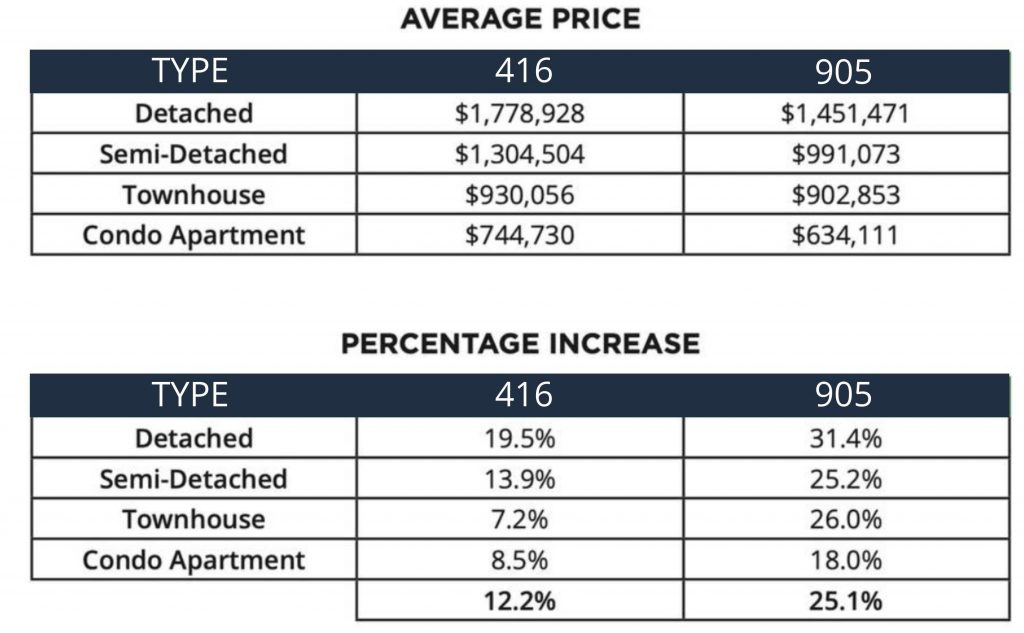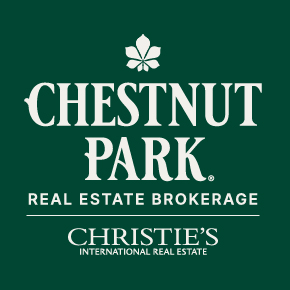The residential resale market rebounded in September after five months of declines in sales and the lull of the summer months. There were 9,046 sales reported in September, 18 percent fewer than reported last year, but more than 5 percent higher than the 8,580 reported sales in August, the first month-over-month increase since the early spring of this year.
As indicated in our August Report, there are a number of themes that are driving the market, themes that will continue at play for the remainder of this year and into 2022.
1. AVERAGE SALE PRICES
Average Sale Prices for all properties sold have been fairly stable through 2021. The average sale price has been approximately $1,080,000 since February, fairly consistent throughout those months, including the month of March, which saw the market deliver an unbelievable 15,629 sales.
In September, however, the average sale price jumped to a record-breaking $1,136,280: eye-popping because it includes 2,664 condominium apartment sales, which represent 30 percent of the entire market with an average sale price of only $708,000. Needless to say, the average sale price of ground-level property was on fire, with the average sale price for detached and semi-detached properties in the City of Toronto coming in at $1,779,000 and $1,305,000, respectively. The average sale price for the greater Toronto area will continue to rise, primarily by what is happening in the 905 Region.
2. CITY OF TORONTO – 905 REGION DISPARITY
In September average sale prices in the 905 Region once again accelerated much faster than in the City of Toronto, as is illustrated in the chart below.

As measured against all property types, the average sale price increased by more than 25 percent in the 905 Region as compared to only 12.2 percent in the City of Toronto (416).
The reason for this disparity is obvious. House prices of all types remain substantially less expensive in the 905 Region as compared to the City of Toronto, however they are catching up.
3. DEMAND-SUPPLY TENSIONS
September has clearly illustrated that demand, throughout the greater Toronto area, is dramatically high, and unfortunately, supply is chronically and historically low. It was no surprise that affordable housing was a key campaign platform for all parties during the recent national election.
At the end of September, there were only 9,191 available properties throughout the greater Toronto area, almost 50 percent fewer than last year. It is not surprising therefore that all properties that came to market in September (on average) sold in only 14 days, and substantially less in some sub-markets; for example, semi-detached properties in the City of Toronto (only 11 days). What is especially concerning is that the available supply in the 905 Region has dwindled dramatically.
In September of the 9,191 properties available for sale, 52 percent of them (4,821) are located in the City of Toronto. Of those 4,821 available properties, 2,918 are condominium apartments. Historically only 30-35 percent of available properties were located in the City of Toronto, the balance in the 905 Region. There is no clearer evidence that the pandemic has caused buyers to look beyond the City of Toronto, where house prices were less expensive and the supply was more plentiful. Not any more.
4. LIST PRICES VS. SALE PRICES
Except for one trading area in the City of Toronto, where the average sale price was $5,625,720, the recorded sale price of all properties sold throughout the greater Toronto area exceed the asking price, on average by 106 percent. This is a first, and it proves that in this market the list price is merely a starting point. No one expects that the end sale price will be equal to or lower than the asking price. This phenomenon is a product of the demand-supply problem. In some trading areas, the end sale price exceeded the asking price by substantially more than 106 percent. For example, all semi-detached properties in Toronto’s eastern trading areas sold for a breathtaking 118 percent over the asking price.
To reiterate, the list price of properties today is only a starting point.
5. CONDOMINIUM APARTMENT SALES
Condominium apartment sales, devastated by the early effects of the pandemic, have come roaring back, and so have their sale prices. In September 2,664 condominium apartments were reported sold across the region, exceeding pre- pandemic sales numbers. Of those 2,664 condominium apartment sales, 1,792 were in the City of Toronto.
As the chart above illustrates prices are following sales. In the City of Toronto, the average sale price increased to $744,730 and to $634,111 in the 905 Region, 8.5 and 18 percent, respectively. In the central core of Toronto, where 1,176 sales were recorded (44 percent of all recorded sales) the average sale price reached $806,242, a record high and the first time the average sale price has exceeded $800,000. Even Toronto’s least expensive housing type is now becoming pricey.
Going forward the five trends that have been discussed in this Report will continue to influence the resale market. Expect sales in October to be even stronger than September, with continued pressure on sale prices due to the lack of available supply.
Prepared by Chris Kapches, LLB, President and CEO, Broker, Chestnut Park® Real Estate Limited, Brokerage.
Have questions about the market, selling or buying?
Contact me any time. I’m happy to answer any questions you may have.



